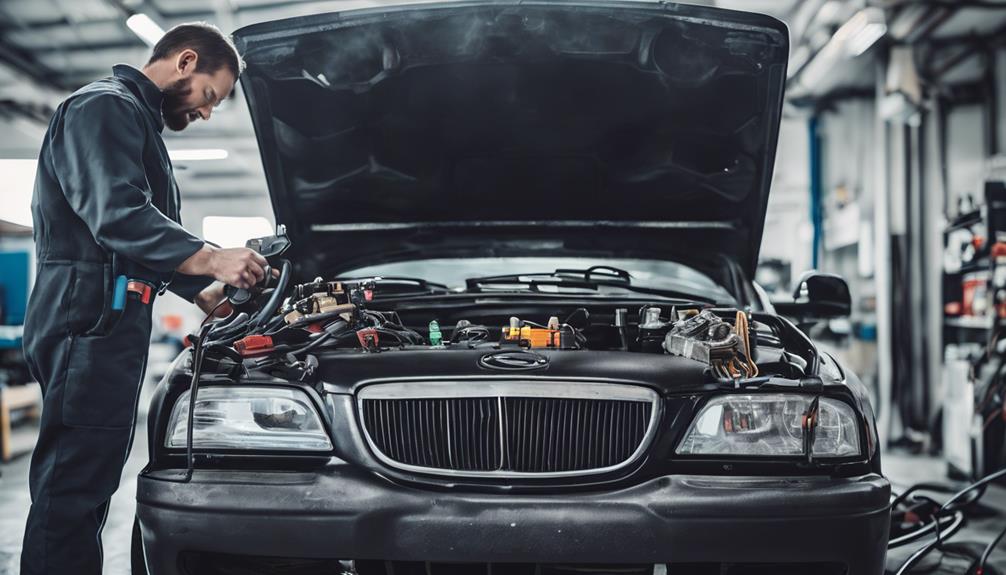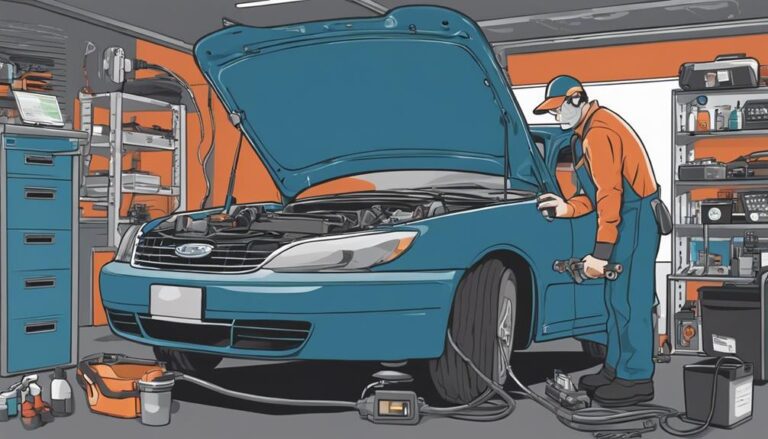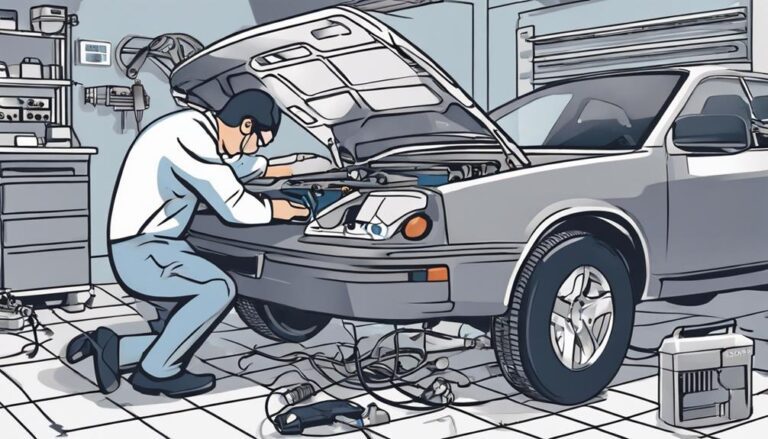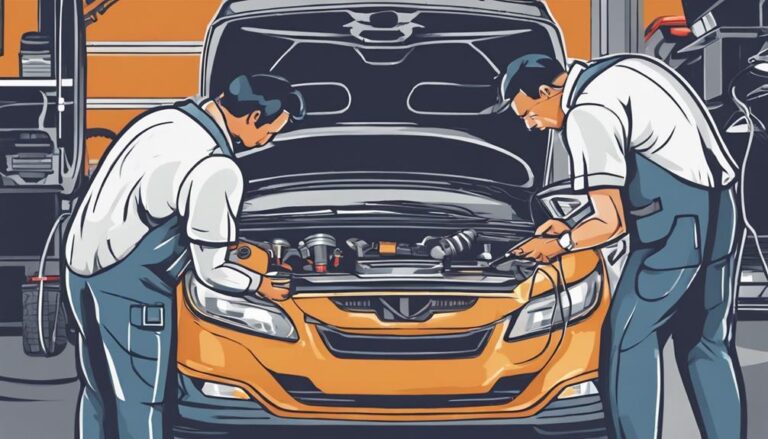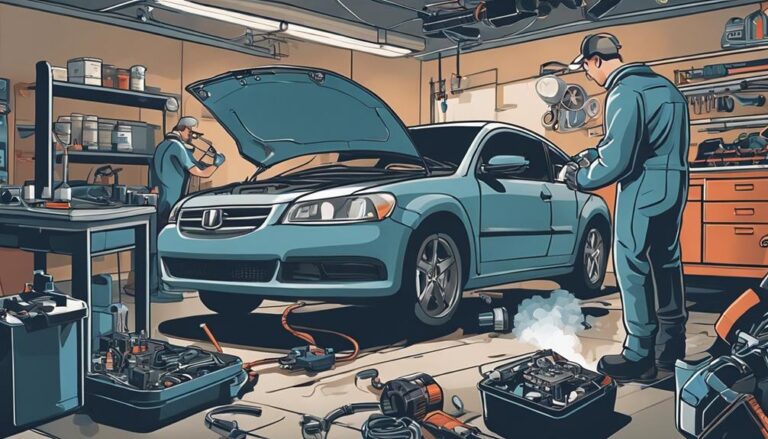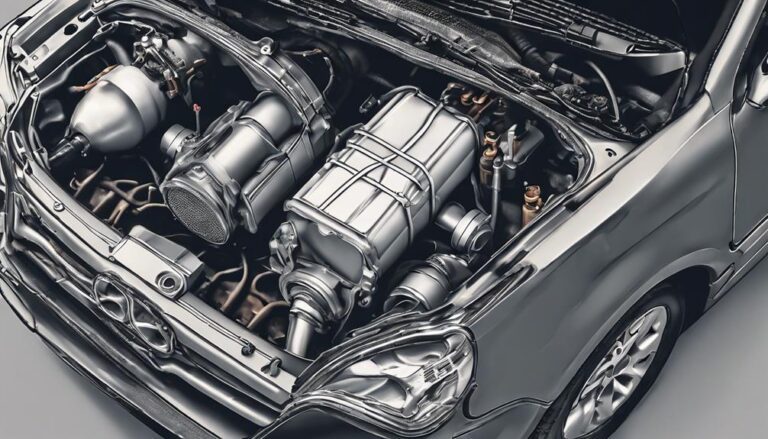3 Essential Tips for Emission System Diagnostics
Imagine your car's emission system as a finely tuned orchestra, with each component playing a vital role in harmony.
Now, picture a scenario where one instrument goes out of tune, disrupting the entire symphony. Understanding how to diagnose emission system issues is like being the conductor who can bring back the harmony.
Curious to uncover the three essential tips that can help you orchestrate a smooth-running emission system performance? Stay tuned to discover how these tips can keep your vehicle's emission system in perfect harmony.
Key Takeaways
- Use OBD-II scanner for quick diagnostic trouble code retrieval.
- Regularly check oxygen sensors and EGR valve for system health.
- Conduct prompt emission system diagnostics when check engine light appears.
- Employ essential tools like multimeters and smoke machines for thorough diagnostics.
Common Emission System Diagnostic Techniques
When diagnosing the emission system, using an OBD-II scanner is essential to retrieve specific diagnostic trouble codes related to potential issues.
The emission system plays a critical role in reducing harmful pollutants emitted by your vehicle's engine. To effectively diagnose the emission system, it's important to check components such as the oxygen sensor and EGR valve for any signs of wear or damage.
The oxygen sensor monitors the oxygen levels in the exhaust gases, providing important data for the engine control unit to adjust air-fuel ratios. Additionally, testing the EGR valve's functionality by observing its response to changes in engine conditions can help identify issues affecting the emission system's performance.
If your vehicle's check engine light illuminates, prompt diagnostics of the emission system, including a smoke test to detect vacuum leaks, can pinpoint potential problems early on.
Key Tools for Emission System Diagnostics
To effectively diagnose emission system issues, utilizing key tools such as an OBD-II scanner is imperative for accessing the vehicle's onboard computer. Multimeters play a critical role in checking the functionality of electrical components like sensors and valves within the emission system. Smoke machines aid in detecting leaks by pressurizing the system and observing smoke escaping from potential leakage points. Exhaust gas analyzers are essential for measuring exhaust gas composition to guarantee emission levels are within permissible limits. Vacuum gauges are utilized to identify vacuum leaks that can impact both engine performance and emissions control.
| Tools | Description |
|---|---|
| OBD-II scanner | Accesses the onboard computer for emission system diagnostics. |
| Multimeters | Checks electrical components like sensors and valves for proper function. |
| Smoke machines | Detects leaks by pressurizing the system and observing smoke for escape. |
| Exhaust gas analyzers | Measures exhaust gas composition to evaluate emission levels. |
| Vacuum gauges | Identifies vacuum leaks affecting engine performance and emissions control. |
These tools collectively enable a thorough assessment of the emission system to pinpoint and resolve any issues affecting engine performance and emission levels.
Troubleshooting Tips for Emission System Issues
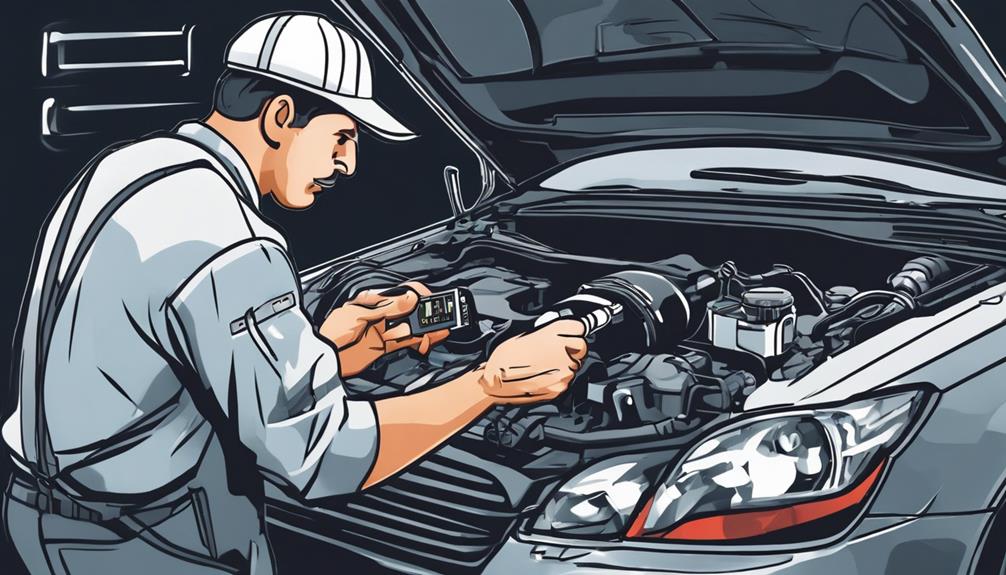
Begin by inspecting important components like oxygen sensors and catalytic converters for any signs of damage or malfunction. These elements play a key role in monitoring and reducing emissions in your vehicle.
If the check engine light is on, use an OBD-II scanner to identify the specific issue accurately. Additionally, testing the EGR valve is essential to make sure it's functioning correctly to minimize harmful emissions. Check for vacuum leaks, as they can negatively impact the performance of your emissions system.
Consulting a professional mechanic when dealing with complex emission system problems is recommended. They have the expertise and tools to diagnose and repair issues effectively. Addressing emission system problems promptly not only helps the environment by reducing harmful pollutants but also improves fuel economy and overall performance.
Frequently Asked Questions
How to Pass Emissions Test Tricks?
To pass emissions test tricks, make sure your vehicle undergoes emission system modifications, follows correct testing procedures, meets emission standards, maintains emission control devices, repairs system issues promptly, upgrades for better performance, inspects regularly, and enhances system efficiency.
How Do You Pass an Emissions Test When the Check Engine Light Is On?
To pass an emissions test with the check engine light on, diagnose the issue triggering the light using diagnostic tools. Fix the problem, ensuring all emission system components work. Seek professional help if needed for sensor problems or repairing leaks.
How Do You Diagnose an Emissions Problem?
To diagnose an emissions problem, use diagnostic tools to check OBD codes and sensor functionality. Inspect for common issues like exhaust leaks, faulty catalytic converters, and vacuum line problems. Address with fuel additives or emission repairs as needed.
Should You Drive Around Before Emissions Test?
Before an emissions test, you should drive around to warm up the engine. This helps secure accurate results by activating all emission control components. Following varied driving habits allows for a complete drive cycle readiness, crucial for testing procedures.
Conclusion
To sum up, it's highly suggested that you consistently monitor the health of your vehicle's emission system to guarantee peak performance.
By following the outlined diagnostic techniques and troubleshooting tips, you can address any potential issues before they escalate.
Remember, staying proactive in maintaining your emission system will help you avoid inconvenient breakdowns and costly repairs in the future.
Keep up with regular maintenance to keep your vehicle running smoothly.

